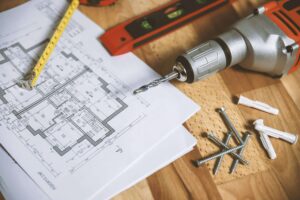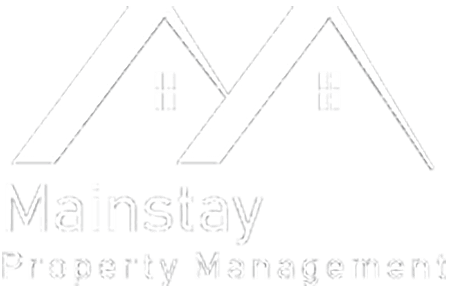The role of a landlord in Maryland involves many hats, but rental property inspections are crucial and often overlooked.

Expert property managers conduct regular rental property inspections. These inspections are vital for maintaining your property’s condition, ensuring your tenants’ safety, and catching early red flags.
With proper planning and execution, rental property inspections will help you protect your investment and maintain a positive landlord-tenant relationship.
For landlords and property owners, understanding the importance of inspections and mastering them can lead to a more efficient property management experience, improved tenant satisfaction, and potentially increased property value. Let’s dig into the complete rental property inspection plan that will help you maintain and protect your Maryland real estate investment.
5-Step Rental Property Inspection Plan
Property inspections are a preventive measure to maintain a rental property’s condition, assure tenant safety, and identify potential issues before they escalate. This practice not only aids in preserving the value of your real estate investment but also fosters a trustworthy landlord-tenant relationship.
Regular inspections can detect damage early, ensuring prompt repairs and reducing liability risks.
Step 1: Preparing for Inspection
Before you start the rental property inspection process, prepare and gather all necessary documents. This includes making copies of the lease agreement, move-in/move-out checklist, maintenance records, and other relevant documents.
Notify Tenants in Advance
Ensure you notify your tenants about the upcoming inspection on time. Most rental agreements require a specific notice period, typically 24–48 hours in advance. Be sure to do so within the allotted time, respecting your tenant’s privacy and right to prepare for your visit.
Gather the Necessary Tools and Documents
Equip yourself with the tools needed to conduct a thorough inspection. This might include a flashlight, ladder, camera, or smartphone for photos and inspection documents such as checklists or maintenance history logs. This step ensures that you can document and record the condition of your property systematically, which can be invaluable for dispute resolution or insurance claims in the future.
Step 2: Exterior Inspection
The exterior of your property is the first line of defense against the elements and wear and tear. Here’s how to ensure it’s in top shape.
Check for Structural Issues
Inspect the foundation, exterior walls, windows, and roof for any signs of damage or deterioration. Look for cracks, leaks, and pests, as these can worsen over time if not addressed promptly.
Assess Landscaping and Maintenance

A property’s curb appeal isn’t just for looks. It can impact the overall value and tenant satisfaction. Check that landscaping is well-maintained, which includes keeping trees and shrubs trimmed, lawns mowed, and walkways clear.
Step 3: Interior Inspection
Tenants spend most of their time in the interior, and a healthy and inviting space is crucial for retaining good tenants.
Evaluate the Condition of Walls, Floors, and Ceilings
Walk through each room and examine the condition of walls, floors, and ceilings. Look for cracks, holes, water stains, and signs of mold, which could indicate a more significant issue.
Inspect Appliances and Fixtures
Test appliances and fixtures to ensure they’re functioning correctly. Pay attention to major appliances such as stoves, refrigerators, and dishwashers, as well as safety features like the circuit breaker box and emergency shutoff valves. Note any wear or damage that might necessitate future repairs or replacements.
Step 4: Safety and Compliance Checks
Safety should be non-negotiable in your rental property. Stay current on the latest safety regulations and always ensure compliance.
Ensure Smoke Detectors and Carbon Monoxide Detectors Function
This is a life-saving step. Test and change the batteries in smoke and carbon monoxide detectors if necessary. Also, ensure they’re placed in the correct locations according to local building codes and manufacturer guidelines.
Verify Compliance with Safety Regulations
Be aware of local laws and regulations, which vary widely from state to state and city to city. Double-check that your property meets or exceeds all safety requirements, especially those regarding lead paint and asbestos, as non-compliance can lead to hefty fines or legal issues.
Step 5: Documentation and Communication
Clear and transparent communication is vital in any business relationship. Documenting and communicating your findings after the inspection can mitigate potential misunderstandings.
Document Findings with Photos and Notes
Take detailed notes and photographs of every area, from the cleanest to the most worn-out. Use timestamped photos to create a comprehensive record. Photography can be influential evidence of security deposit disputes or tenant turnover.
Communicate Inspection Results with Tenants
Once the inspection is complete, sit down with your tenants or send a letter detailing the results. This communication serves two purposes: it keeps your tenants informed about their living environment and demonstrates your commitment to transparency and proactive property management.
Expert Tips for Handling Inspection Disputes
Disputes may arise during or after property inspections but can be resolved amicably with the right approach. Here are several tips for handling inspection disputes effectively.
Stay Professional and Empathetic
Maintain a professional demeanor throughout the dispute resolution process. Understand that your tenants may have concerns or frustrations; showing empathy can go a long way in de-escalating potential conflicts.
Refer to Documentation
Use the detailed notes and photographs taken during the inspection to clarify misunderstandings. Timestamped photos and inspection checklists can provide objective evidence that supports your findings or concerns.
Offer Solutions, Not Criticisms
If the dispute concerns property damage, focus on problem-solving rather than placing blame. Discuss repair options, timelines, and responsibilities. Being solution-oriented fosters a cooperative atmosphere.
Know When to Seek Mediation
If the dispute cannot be resolved directly, consider mediation. A neutral third party can help the landlord and tenant reach an agreement without legal action.
Clear communication and a respectful approach are key to effectively managing and resolving inspection disputes.
Leveraging Expert Maryland Property Managers

Mainstay Property Management, serving Maryland, is a testament to unsurpassed excellence in rental property management. We combine traditional service with modern technology for top-notch property management solutions.
Mainstay Property Management in Maryland offers comprehensive property management services that include:
- Tenant Screening and Placement: Rigorous background and credit checks to ensure reliable tenants.
- Maintenance and Repairs: Proactive and reactive maintenance to keep properties in peak condition.
- Legal Compliance: Keeping up with regional laws and regulations to protect landlords and tenants.
- Financial Reporting: Detailed monthly reports for comprehensive financial overview.
- Property Inspections: Regular inspections to maintain and enhance property value.
Regular rental property inspections are necessary to maintain the value and safety of your Maryland rental property. With the help of a trusted property management company like Mainstay, you can ensure that your property is always in top condition and that your tenants are satisfied.
Contact Mainstay Property Management to ensure your property is well-maintained, compliant with regulations, and attracts reliable tenants.

